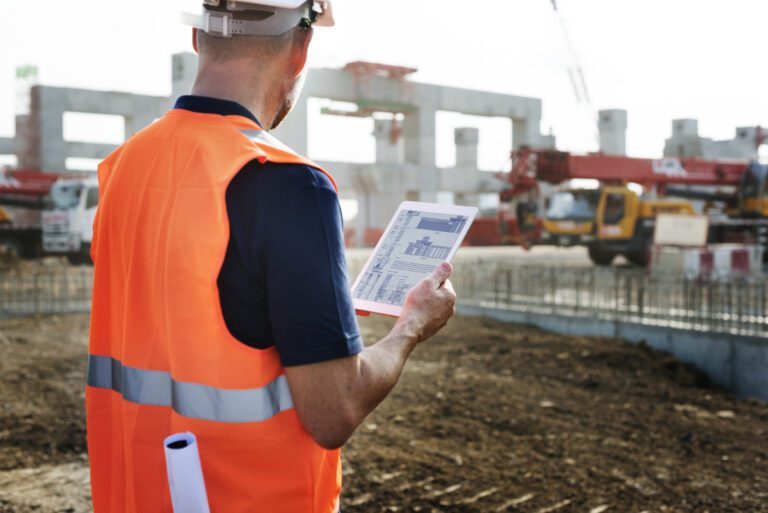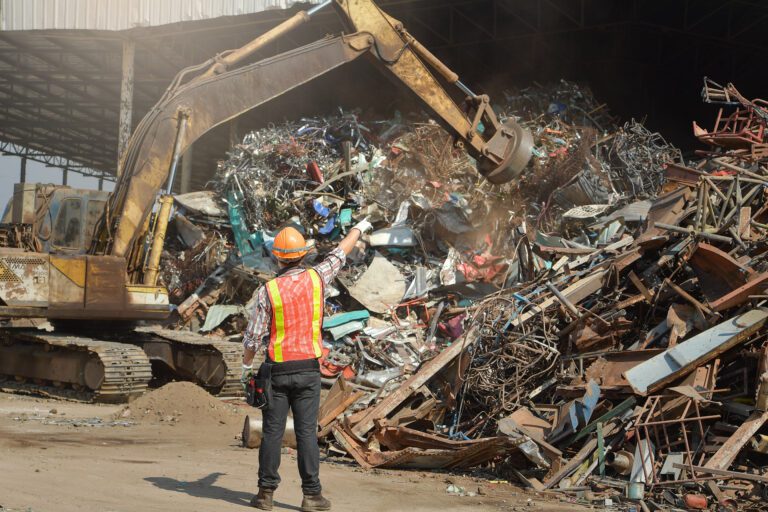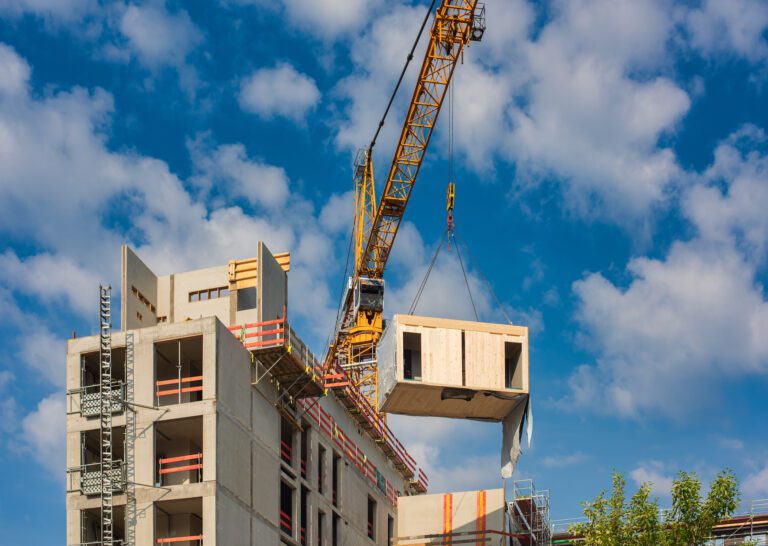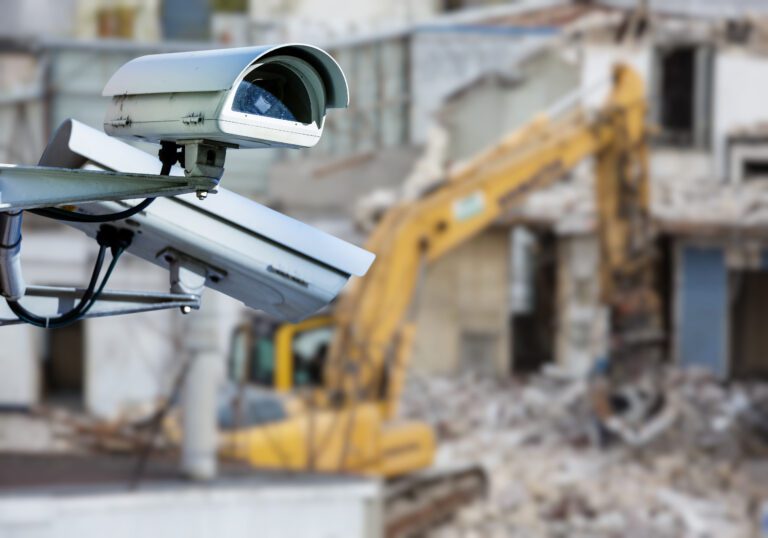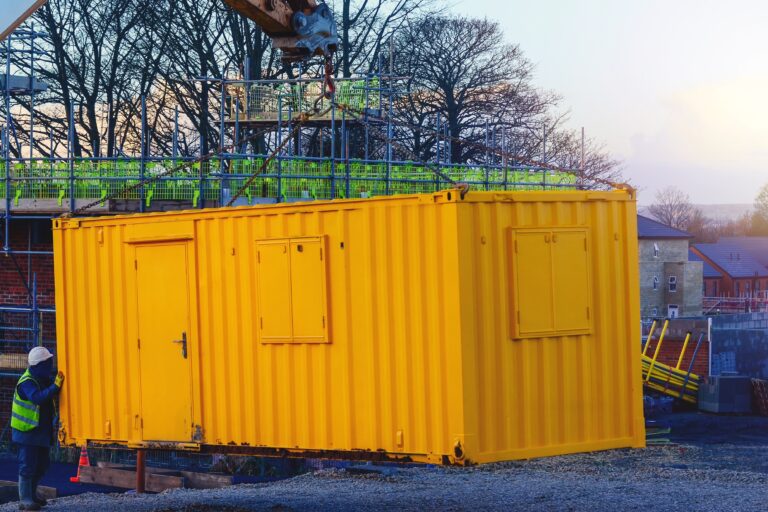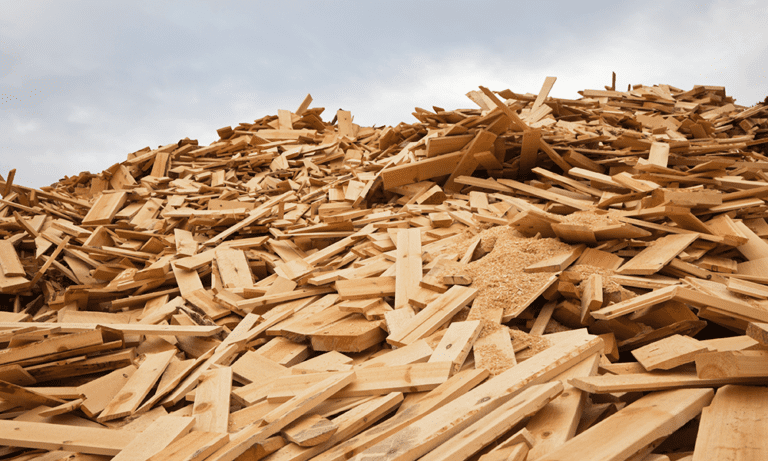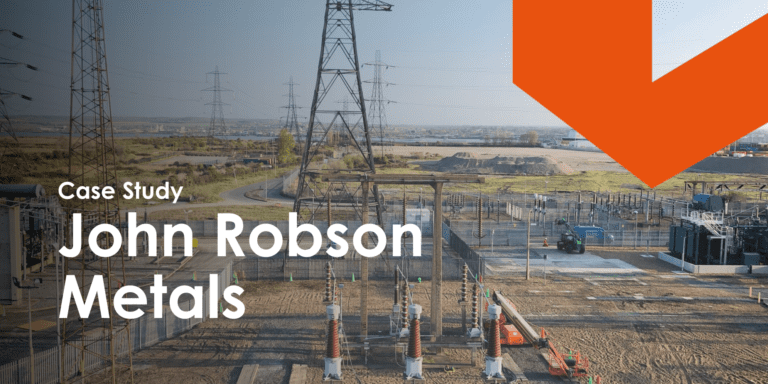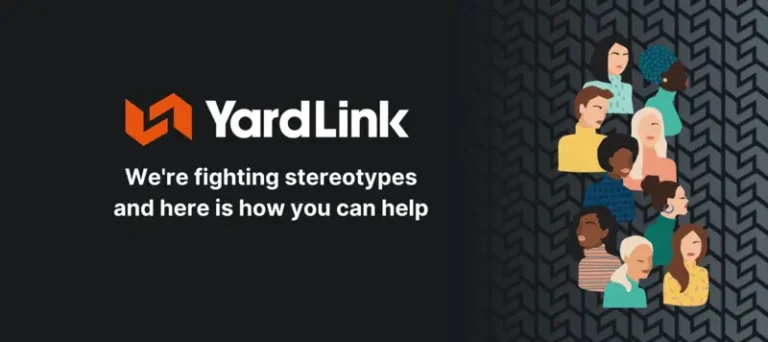24th August, 2021
A Complete Guide to Wall Reinforcement
In construction, some walls need to be supported to stop them falling. We look at how crow props, strongboy brackets & u-heads provide reinforcement.
During construction, many walls and objects need to be supported to prevent them from falling down or caving in.
Especially when you’re working in or around them, it is essential for your health and safety that these structures remain in place so that you can carry out the necessary work underneath.
By using wall reinforcements, you can be confident that you can get the job done safely and securely, removing the risk of the structure collapsing.
In this blog post we’ll identify the different types of reinforcements including acrow props and strongboy brackets and why they are essential for your project.
What is Wall Reinforcement?
Wall reinforcement is the process of strengthening a structure whilst it is being constructed or renovated. The clue is in the name, as by putting something underneath a structure, you are essentially ‘propping’ it up.
This allows workers to comfortably carry out their work without worrying about other parts of a building collapsing.
Previously, professionals had relied on timber supports which are less durable than steel reinforcements which are used across the industry today.
Although timber is strong, it is weakened by water and vulnerable to fire meaning workers would have to be more careful when using this material. Furthermore, cutting wooden props to fit underneath the existing structure is very time consuming. In the 1900s, these props would be cut to certain specifications meaning they could only be used once.
In the construction industry, it’s important to be aware of environmental waste and how we can each contribute to a more sustainable planet. Thankfully for both workers and the environment, steel reinforcements were invented which made this job much easier.
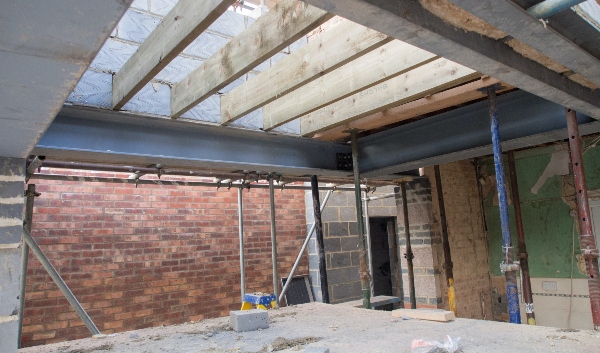
Why is Wall Reinforcement in the Construction Industry Important?
In renovation jobs, it might be necessary to remove large parts of a structure. Once you dismantle these walls, those around them are left vulnerable as there is no longer anything to support them.
In particular, if you remove internal walls or a roof then you run the risk of the entire property caving in. There needs to be thorough support in place to retain the existing structure otherwise it could lead to absolute devastation.
Especially if the walls are old and weak, it might not take much for them to collapse. Furthermore, the remaining walls might be load bearing which would make them even more likely to fall.
Anyone working on a job of this nature should be aware of the importance of wall reinforcements. Failure to do so could cost a lot of time and money as you will have to rebuild part, or all, of the damaged structure. It can also be very dangerous for anyone working in this area and could lead to a serious injury.
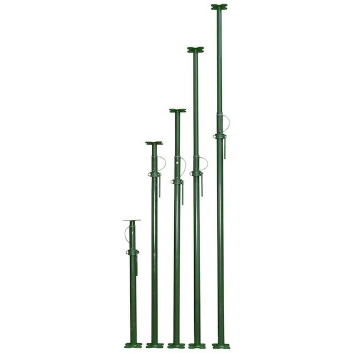
What Are Acrow Props?
Acrow props are long tubular posts generally made of steel. They provide temporary support to walls and ceilings during construction work and come in a range of adjustable sizes, from 0 to 4.
As we’ve discussed, before the introduction of steel props workers relied on timber poles which were not ideal. In 1935, William de Vigier recognised this issue and came up with the idea of using steel reinforcements which could be adjusted to the height of the individual project.
Due to this clever design, the steel poles can be used time and time again which saves construction workers time and money. It didn’t take long for construction teams globally to see the benefits of using Acrow props and today they are sold all over the world.
They are still considered the lone standard for propping up load-bearing objects.
Typical Uses of Acrow Props
Usually acrow props are used for scaffolding and to provide support for buildings during construction or renovation.
They assist in the completion of the following tasks:
- Wall removal or interior wall renovation.
- Adding a window, doorway, or archway to a wall.
- Installing reinforced beams and concrete sections.
- Bracing formwork for stairs, columns, and walls.
They are available in a variety of sizes to suit the needs of your project from 0-4.
The lower the number, the stronger the weight-bearing capacity of the reinforcement so it’s important to consider this before choosing which is best for you.
Although selecting an acrow prop based on the size you need is sufficient, by opting for a large prop it means you won’t need to upgrade if you encounter heavier objects. For example, a size 1 pole can handle the same loads that a size 2, 3, and 4 can so this would encompass all of your project requirements.
The base of an acrow prop is compatible with other types of support such as U Head Brackets and Strongboy Brackets which are capable of carrying heavier loads. Despite how much weight they can support, these pieces of equipment are very lightweight which makes them easy to transport for different jobs.
Safety Considerations When Using Acrow Props
Any piece of equipment is only safe if it is handled and installed correctly.
Whilst they are very useful tools when you’re working on construction, there are several things to take into account to ensure the job is completed safely.

Installation
You must first choose a suitable location for installation as the sturdiness and stability of the prop depends on its point of contact. This is essential to ensuring the prop is fixed in place and can sufficiently support the structure.
In particular, the wall, ground, and/or ceiling that’s being supported or rested on for support must possess the blow features:
- Completely level to ensure the weight is evenly distributed.
- Have additional support for the prop’s base-plate. Generally sole boards are used here.
- Stable and in good condition. If necessary, the area will have to be made safe before the prop is installed.
In addition, the upper surface of the load that is going to be supported should be checked to make sure that it will not collapse when the prop is bearing the weight.
Furthermore, props should stand straight up and should be positioned vertically to hold the weight above.
Maintenance
Once the Acrow prop is installed, it should never just be left. To ensure it doesn’t move or loosen, it needs to be routinely checked throughout the construction process.
When a wall is being opened or dismantled, props can often move so it’s vital to check positioning after any significant progress in the project. Generally as good practice, all supportive props should be checked at the start and end of each working day, as well as at the start and finish of every task that the prop is being used for.
In addition, you should have your props professionally inspected by a third-party professional at least once per week while they are in use to be on the safe side and ensure the safety of workers on site.
Throughout the project, it’s important to monitor how much weight is being added so you can be sure not to exceed the calculated load maximum.
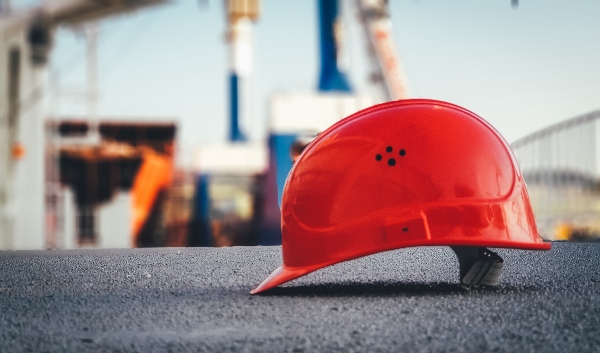
Wear Safety Equipment
When using any piece of construction equipment it is important you wear the correct protection. When installing and using acrow props you should always wear a hard hat, gloves, and goggles as this protects you in the event of falling objects and debris.
You should never attach lighting or cables to the steel poles as these could become tangled and in turn, alter the contact points.
Acrow props should only ever be used by trained professionals who understand the necessary safety precautions. When handled correctly, they are very useful tools for contractors and construction companies who carry out renovations and repairs.
If you’re new to the construction industry then it’s important you take time to learn how to use acrow props safely as this is not only imperative for your own safety but also those working around you.
Load Bearing
Before the prop is used, the weight of the object that is being supported should be checked by a qualified person. These calculations are usually provided by architects and structural engineers to make sure the prop is capable of withstanding the capacity.
Also, the additional weight of other pieces of equipment and workers needs to be considered when calculating the weight of the load.
It’s absolutely essential that all overhead loads including walls and beams are supported before removing other supporting structures. In addition, only one area of the wall should be worked on at a given time as multiple openings will make the structure weaker.
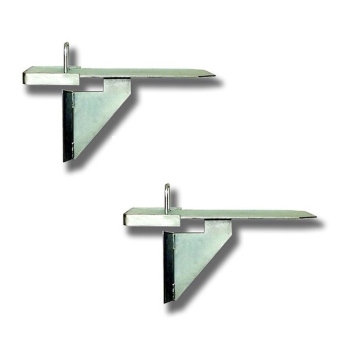
What are Strongboy Brackets?
As we’ve previously touched on, strongboy brackets can be used with acrow props to provide additional support.
They give a projecting spade-like blade over props, which can easily be hammered into a raked mortar joint. Once they have been inserted, the screw collar of the acrow prop is tightened until both the prop and strongboy are taking the weight of the structure.
When used correctly, these brackets are very useful and have a rated load capacity of 340kg.
At YardLink, our strongboy brackets have a safe working load (SWL) of 340kg, a maximum working height of 3.0m, and a maximum spacing of props of 900mm. These specifications allow you to safely select the tools you need for your project.
Safety Considerations When Using Strongboy Brackets
The strongboy bracket has the ability to provide enough support for workers to operate safely and securely, when it is used correctly.
However, below are some key pointers to take into consideration first.
Installation
You should always ensure your strongboy bracket is installed correctly on the top of your prop. If you pull down on the front of the blade, there should be no movement which means that it is securely attached in place.
Check the Brackets
Throughout the duration of any work, you should regularly check the acrow props and strongboys in use to make sure they are not coming loose. Although we have touched on this above this is highly important for the safety and stability of the building so we thought it would be worth reiterating this!
Do Not Exceed the Maximum Load
The maximum load applied onto a single strongboy bracket should not never exceed 340kg. If the weight is greater than this, then two brackets should be used to sufficiently hold the structure. Otherwise you’re at risk of the bracket becoming loose or misshapen.
Positioning Your Props
When making any openings in load bearing structures that are up to and exceed 4m in width, all props should be diagonally and horizontally braced together to offer additional support and to keep the structure firm.
You encounter a greater risk of a structural failure when the gap is wide, so positioning the props in this format will ensure your building remains in place.
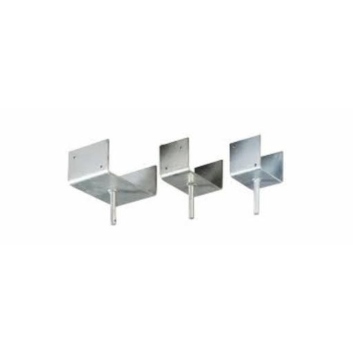
What Are U-Head Attachments?
These attachments are generally used for supporting an object once it’s in position on top of an acrow prop.
As the name suggests, these brackets are a ‘U’ shape and are designed to stop an object from sliding out of place. Their primary purpose is to hold timber beams of steel RSJ’s whilst they are inserted and held into place.
Due to their shape, it stops the steel from slipping off the acrow prop, although there are several different types of u-head attachments. Some are designed to fix over the top of a plate whereas others are designed to fix over the inner tube.
At YardLink, our U-Head brackets are available in a variety of sizes to suit the needs of your project. You can easily select which ones you need and make an order by simply creating an account with us. It takes seconds!
Safety Considerations When Using U-Head Brackets
Although these types of attachments should be relatively safe to use, if you take care when installing them, you need to consider the below pointers.
- Exactly how much vertical load weight you will need to support so you can choose the right bracket size.
- Exactly how you need to support it e.g. strongboys or needles as this will determine which product you select.
- Exactly how many props, strongboys or needles you will need to use to make sure the load to make sure it is sufficiently supported.
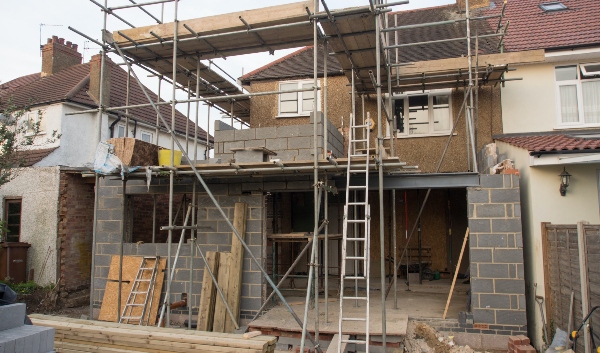
A Complete Guide to Wall Reinforcement
When you’re carrying out any building or repair work it’s important you support the existing structure. If you’re dismantling any part of the building, you run the risk of internal and external walls collapsing if they are not sufficiently reinforced.
It’s not only the obvious loads to take into account such as the bricks above the area you’re working on and the immediate surrounding wall. You also need to consider the weight of the workmen walking above the area and any furniture that might be resting on the load.
These things should never be overlooked and need to be factored into your calculations to ensure you choose the right equipment and support in place. You should always seek a professional structural engineer to produce your calculations or at the very least, to check over the ones you have made.
This gives you peace of mind that you have calculated everything correctly and that the equipment you have chosen can withstand the weight above.
If you are looking for a wide range of acrow props and strongboy hire for wall support, then look no further than YardLink. Our complete range provides temporary support to walls and ceilings during construction work. From support needle beams to push-pull props, you can be confident you have the right supporting methods. If you’re unsure about your requirements give YardLink a call today!
YOU MIGHT ALSO BE INTERESTED IN

